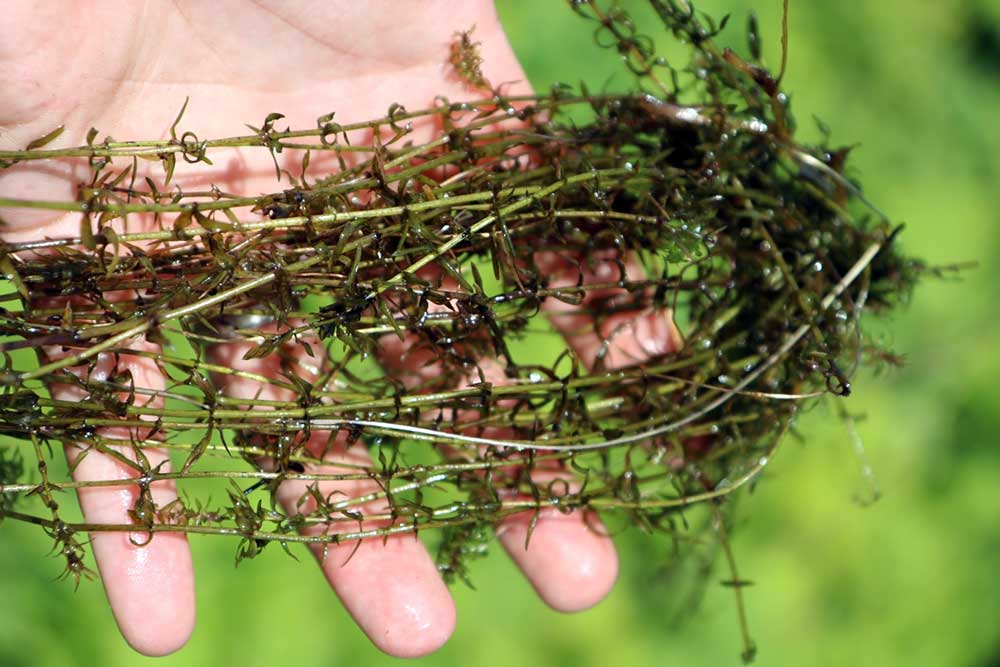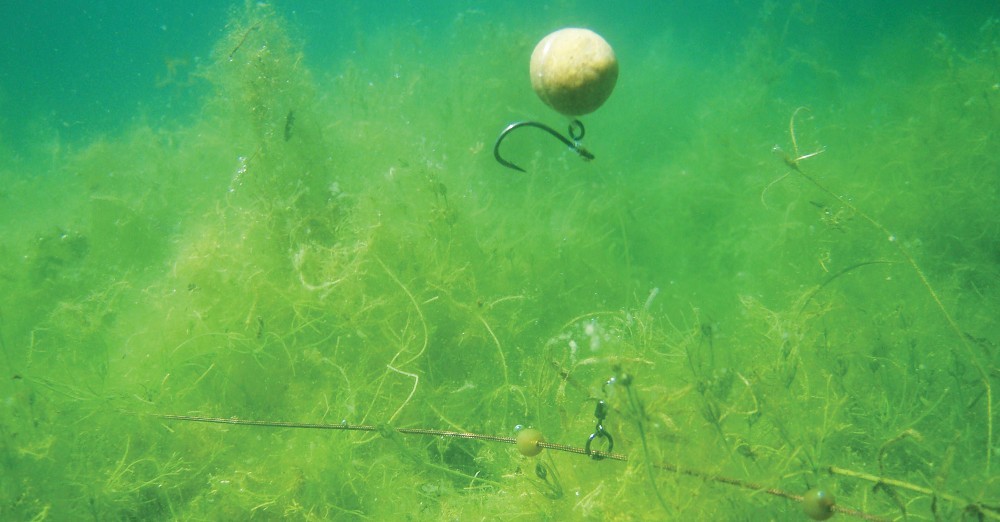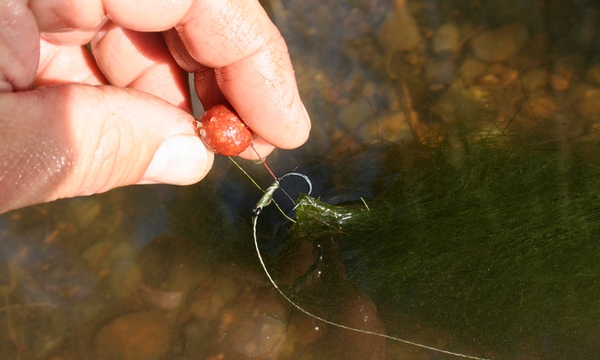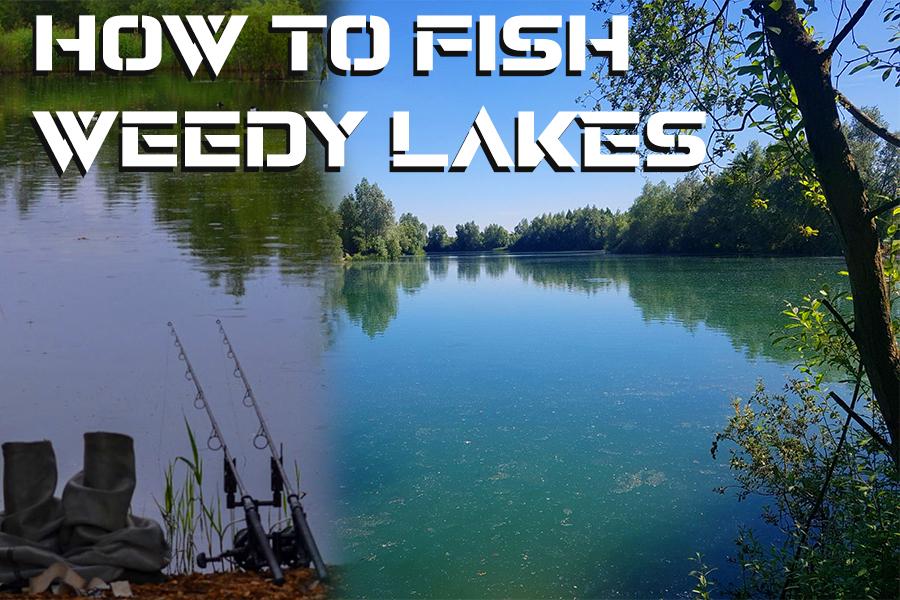Fishing Weedy Lakes - How to Tackle Weed and Be Presented
So many Lakes nowadays have weed present. Being small patches or the majority of the lake bed it can still cause confusion on how to approach weed. Weed can be an awesome feature in the lake, it holds cover and natural food for carp. This blog should give you some information on how to approach weed and how to fish weedy areas effectively.

(Canadian Pond Weed)
Find a Spot to Present
The first thing is to find a spot to present a rig over. To do this you can use a fishing rod with a lead or a marker rod with braided mainline. I like to use a braided mainline when finding a spot as the lack of stretch allows me to feel more on the drop. The lack of stretch also allows me to find underwater features easier when dragging the lead back on the bottom. I know many people who use a fishing rod with monofilament mainline however for this and the benefits of this is that the drop will feel exactly the same on your fishing rods (if you use monofilament line) meaning that you won't be doubting yourself when the drop feels different which means you know your fishing on the right spot. This is down to personal preference. If you want to find the best spot you can in the area of water then I recommend a braided mainline set up. If you just want an area which you can present a rig then a monofilament mainline set up will do that job perfectly.
Essentially when finding a spot, you want to be able to feel a drop. The harder the drop, the cleaner the lake bed is. If you can't feel a drop then that area is not presentable. It's often worth climbing up a tree to look for channels and gaps in the weed. With a pair of polarised sunglasses this should be fairly simple as the water is often clear in weedy venues. If you find a nice looking spot then investigate it with a lead and marker to gauge the depths ect.
To get good line lay, you can rake out a small channel for your line to sit through. This is the best way to get a good line lay by far in the weeds. Failing that you can use a float to raise your line off the water meaning that your line is on the surface.
When you get a bite, be sure to get on the rod as quickly as you can so the fish doesn't kite into weed. If a fish is weeded up, apply consistent pressure and it should come through. Never pull for a break in this situation as this can leave the fish tethered in the weed. If the fish is still hooked you'll be able to move the weedbed along with the fish. It's surprising how much weed you can drag in. However if the fish has gone you won't be able to move the weed at all. Still never pull for a break, even if it is locked up. Put the rod down for an hour and then if you can get a boat out.

(Blanket Weed)
What Rigs / Set-Up to Use When In Weed
This all depends on the spot you're fishing. If you're fishing a small clear spot in the weed then a short hooklink will be ideal. As the spot is short the fish are less likely to be moving around as much, meaning that the short hooklink will come into its own when it comes to the fish making contact with the lead. I like to fish a braided hooklink with a wafter hookbait or something semi buoyant. You can critically balance your hookbait with the correct amount of buoyancy to make sure your rig falls behind your lead slightly, giving it the best presentation. When fishing this sort of bottom, I like to fish with a lead-clip set up. This setup allows the fish to come into contact with the lead a lot quicker than a helicopter set up which improves the hooking properties of the rig. As well as this it is super easy to drop the leads and convenient.
If you're fishing over low-lying weed then you want to use a longer hooklink as the longer hooklink will sit over the weed nicely. In this instance, fluorocarbon like Korda's "Boom" is one of the best options to choose. It sits over the low-lying weed nicely and will reset itself if needs be. As well as this it kicks out nicely from the lead on the cast being a stiff hooklink. When fishing in low-lying weeds I like to use a helicopter set up with the Heli-Safes. The helicopter set up allows the lead to go into the weed first and then the rig should sit on top of the weed as the lead won't be dragging the rig into the weed. I find a pop-up rig the most suited in this scenario as the hook is off the bottom meaning it is not going to get caught on any low-lying weed. A good rig for this is a Hinge-stiff or a chod rig. I'll do a blog on how to tie these at some point!
Be sure to use a strong mainline. Some weed holds muscles which can cut your line easily. 15lb is the lowest breaking strain I would use!

(Silk Weed)
What Bait to Use?
This one may not seem important but bait is pretty important depending on the situation. If you're fishing in low-lying weeds then I wouldn't use boilies as bait. They are not that effective as they sink into the weed and make it harder for the carp to find. The best bait is a particle bait. Particles sit on top of the low lying weed beautifully, meaning that the food is going to be visible for the carp meaning they are more than likely to come across your rig. The Nash Bait Particle is perfect to make a mix of bait, being pre-cooked makes the prep super easy. I like to fish a mix of Large Hemp Mix, Tiger Nut Slush with some chopped boilie in. This gives plenty of food for the carp.
When fishing a small clear spot in the weed, I like to use boilies and pellets. The lack of weed on the clear spot makes the bait stand out to the carp still and you can fish an even tighter spread of bait with boilie and pellet as they won't be dragged in the water column when falling onto the spot. Tighter patches of baits on these sorts of spots work the best!
